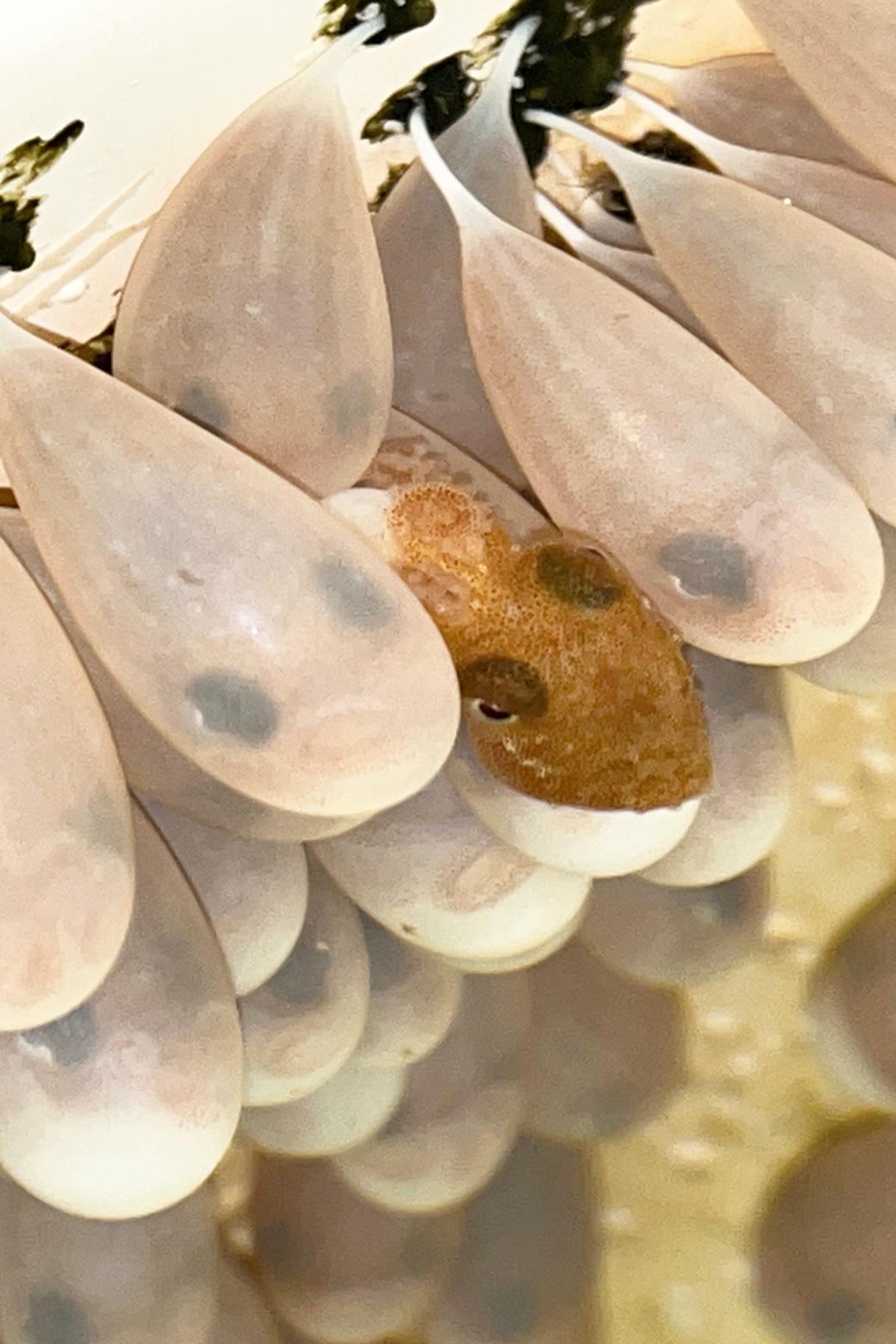This as-told-to essay is based on a conversation with Adi Khen, a coral reefs researcher from Scripps Institution of Oceanography. It has been transcribed, condensed, and edited for clarity.
We often get animals that are caught as bycatch from a trawl or in a prawn trap. With nowhere else to go, they’re transferred to our facilities, and we care for them.
We received a female octopus, a member of a species called Octopus californicus. Their common name is North Pacific bigeye octopus. They have these really big eyes! They’ve been found everywhere from off the coast of California, to British Columbia, to the Gulf of Alaska, from about 100 meters to 1,000 meters deep. They were discovered over a century ago. But because animals like these are from the deep sea, and they’re difficult to observe, we didn’t know much about their lifespan and how long development takes.
After a month of keeping her in the tank, she laid eggs. There were around 200 of them. We assumed the eggs were not fertilized because she was the only octopus in the tank.
Four months later, I noticed the little red eye spots in the eggs. They were fertilized all along. She must have mated in the wild and stored the sperm, which cephalopods are known to do. She stored it for up to a month, and then used it to fertilize the eggs.
It took 10 months total for all of the eggs to hatch. We’ve never had a case of fertilized eggs. And in fact, it’s never happened in captivity for this species.
The mother was doing much of the hard work to care for the eggs. She was blowing water over the eggs to clean them, and also cleaning them off with her suckers, to get rid of debris and prevent bacteria overgrowth.

Before she laid eggs, I was able to interact with her more, and even hold her. After she laid the eggs, she wouldn’t leave the eggs even for a second. She would sleep while holding the eggs, she would eat while holding the eggs. If someone else passed by that she didn’t know, she would cover the eggs, get defensive, turn darker orange, and possibly even spray water. With me, because she knew me, she was more relaxed. When I put my hand in, she would even feel me with her suckers.
One morning, we found her on the ground. She had escaped, and we don’t know why. In the wild, octopus sometimes die when the eggs hatch, which could be due to starvation. Because they’re so focused on guarding the eggs, and they don’t even leave to find food for themselves. But in this case, we were feeding her. She was acting normally. And then all of a sudden, she was gone.
That’s very common with octopuses. Anyone who raises them has to be resilient and understand that they have a very, very intense and short lifespan.
Without the mother there, we had to take over cleaning the eggs. And so we increased the water flow and the airflow to help agitate the eggs. Sometimes, I would spray water on the eggs. We also installed a webcam pointing at the eggs so that we could monitor them remotely.

We didn’t know when they would hatch. And we had no guidelines for how long it would take. So I was checking on them in person and remotely through the webcam.
The eggs hatched over a period of two and a half months. Some hatched early; they were premature and didn’t make it. We lost quite a few. Some of this is natural: They say that in the wild, only 1 percent of octopus babies will make it to adulthood, which could possibly be because of genetic fitness. That might be why they lay so many eggs.
We recorded all our observations for a study and published it. Previously, the incubation time for this octopus species’ eggs wasn’t known. Now, we have a record for future reference. And we sequenced the mitochondrial DNA of the mother. Also, we preserved the mother and some of the babies that didn’t make it for further research.
No one has raised this species as babies. We distributed many of them to other aquaria to raise awareness about this species. We kept several of them. We’re experimenting with what to feed them, and how they interact with each other.
Correction Dec. 10, 2022: Due to a transcription error, this piece initially stated that the eggs were not fertilized all along. But they were.
